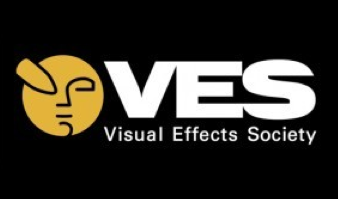VES Publishes Analysis: The State of the Global VFX Industry
July 16, 2013
The Visual Effects Society (VES), the industry’s professional honorary society, released “The State of the Global VFX Industry 2013,” a comprehensive strategic analysis of the business drivers impacting all sectors of the VFX industry working in film production and presentation of solutions to mitigate instability. Initial recommendations focus on improving business and financial management acumen among artists and facilities management through training programs and new standards and practices.
 The white paper is the first outcome of a working group of diverse industry stakeholders convened in March 2013 by the VES, which has committed its continued leadership to forge and execute a blueprint for action.
The white paper is the first outcome of a working group of diverse industry stakeholders convened in March 2013 by the VES, which has committed its continued leadership to forge and execute a blueprint for action.
Co-authored by ETC@USC executive director and CEO Ken Williams (and co-founder of Sony Pictures Imageworks), and Carl Rosendahl, former president of PDI/Dreamworks and associate professor at Carnegie Mellon University’s Entertainment Technology Center, the VES findings are the result of a rigorous process, which incorporated input from more than three dozen industry representatives including artists, studio, business and labor leaders and facility executives, whose companies have operations in eight countries and 15 cities around the world, as well as data from several online surveys and published works.
“In recent months, worldwide dialogue in the visual effects community has created a sense of urgency to address the complex pressures on artists and facilities dealing with issues of frayed business models, financial instability and an increasingly ‘nomadic’ workforce operating without a secure vision of the future,” said Eric Roth, VES executive director. “The VES saw a need and an opportunity to take a fresh and comprehensive look at the global issues at hand. We’re proud to have initiated a vital effort to analyze and update the business models that govern our industry and hope this resource serves as a catalyst for change.”
Four complex independent drivers of this widespread industry shift were identified: growing competition nurtured by technological advancement and globalization; varying tax incentives and other government dynamics; industry dynamics related to an unpredictable production pipeline and pricing models for bidding and managing jobs; and non-business motivations that may contribute to counterproductive business decisions.
 “The collection of challenges facing the VFX industry related to workflow, profit margins, business models and workforce issues ranged in characterization by participants from natural business evolution to turmoil based on their individual position and geographic locale,” stated Rosendahl. “But ultimately, the perspectives and information coalesced into two distinct categories — those factors outside of our control and endemic to the realities of a global economy, and those the industry can and should take ownership of.”
“The collection of challenges facing the VFX industry related to workflow, profit margins, business models and workforce issues ranged in characterization by participants from natural business evolution to turmoil based on their individual position and geographic locale,” stated Rosendahl. “But ultimately, the perspectives and information coalesced into two distinct categories — those factors outside of our control and endemic to the realities of a global economy, and those the industry can and should take ownership of.”
In the category of impressionable factors, the immediate need to improve business knowledge for artists and facilities was widely cited among interview participants. As such, the paper presents a number of important actions the industry can adopt to increase business and financial management acumen, including: development of industry standards and practices; fixing current models; considering alternate pricing models to fixed price bidding; exploring flexible business and staffing models; and continuing to assess the relative costs/benefits of forming global business and labor organizations.
“In this new landscape, companies will continue to pursue options they believe will enhance both efficiency and profitability,” said Williams. “It is our opinion that widespread participation by artists and facilities in a focused business training program would result in better forecasting, bidding and managing of jobs, a more educated and empowered workforce, increased transparency and accountability — and would usher in a more stable, influential VFX infrastructure with a greater skill set.”
The VES and its working group will advance this process through continued discussion and development of business guidelines, training program elements and other recommended ideas. In addition, a series of public forums on specific business and career management topics relevant to artists and facilities will be explored as opportunities to continue the public dialogue.
“It is clear from this analysis that certain business practices have contributed to today’s uncertain business climate,” said Roth. “Many dynamics are outside of our reach, but this strategic roadmap can help us alleviate some of the insecurity. Now is the time to embrace change, to chart a better, more sustainable future for this industry we all love.”
The complete white paper PDF can be downloaded from the VES site.

No Comments Yet
You can be the first to comment!
Leave a comment
You must be logged in to post a comment.